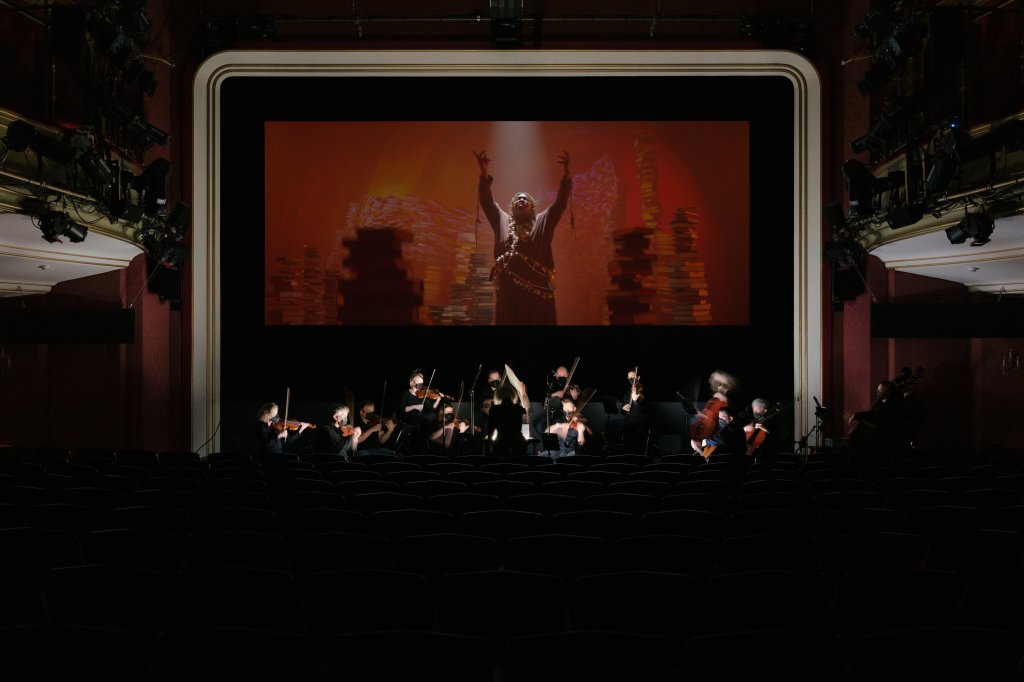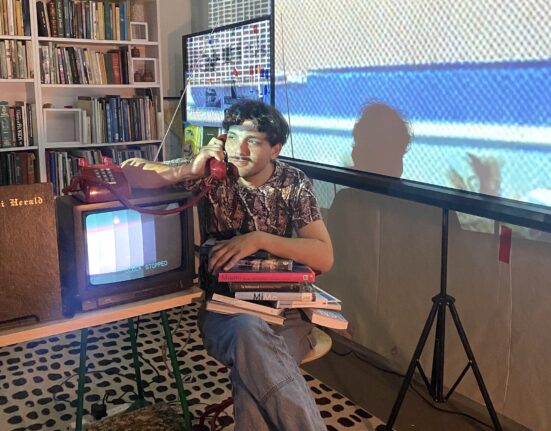Unlike some American high schoolers, Wu Tsang avoided reading “Moby-Dick” in English class. She didn’t discover Herman Melville’s novel until adulthood, and even that encounter was mediated: she attended a talk about “Mariners, Renegades and Castaways,” a 1953 “Moby-Dick” critique by Trinidadian thinker C. L. R. James that reframes Ahab’s boat and crew as a floating factory.
Inspired by James’ study, Tsang turned to the Pequod as a theoretical sandbox — an arena to explore capitalism, queerness, eroticism, race and fascism, all packaged in a familiar narrative. The product of those imaginings stops by the Museum of Contemporary Art from Feb. 14 to 16: “MOBY DICK; or, The Whale,” a 2022 silent film adaptation directed by Tsang and written by Sophia Al Maria. Tsang’s work on “MOBY DICK” has since inspired two related video installations: “Extracts” and “Of Whales,” the latter imagining a trip to the ocean’s surface from a whale’s perspective.
“MOBY DICK” is a return voyage for Tsang, 42, who graduated from the School of the Art Institute in 2004. In an echo of her student days frequenting DIY noise spaces in Bridgeport, collaborations with musicians crop up all over her multimedia works. Tsang’s “Anthem” (2021) projected a larger-than-life video of singer-songwriter Beverly Glenn-Copeland singing spirituals in the Guggenheim rotunda, and her documentary-style “All It Took” (2017) shadowed singer Kelela as a broader commentary on the entertainment industry.
For “MOBY DICK,” a string orchestra of players from the Chicago Sinfonietta realize a score by Pulitzer Prize-winning composer Caroline Shaw and Grammy Award-winning cellist Andrew Yee, with musical direction by Asma Maroof, a longtime colleague of Tsang’s and fellow SAIC grad. Acclaimed poet and theorist Fred Moten, also a frequent creative partner, narrates the film as the Sub-Sub-Librarian, a faceless figure briefly mentioned in the novel’s opening.
The following has been edited and condensed from an interview with Tsang.
Q: Why “Moby-Dick”?
A: A friend of mine, Laura Harris, is a scholar and also the partner of Fred Moten. She gave this really interesting talk about C. L. R. James’ book “Mariners, Renegades and Castaways.” She was particularly interested in this idea of the motley crew — this social class of sailors coming from all different walks of life, and how social kinship formed on the ungovernable spaces of these ships. Melville himself worked on whaling ships; he actually deserted a whaling mission and ended up living in the South Pacific.
The book itself is fraught with racial stereotypes, exoticism and homosociality. Those are really juicy subjects for the kind of work I do: these problematic stories allow us to look through a mirror at society at the time, and also the present. My staging of “Moby-Dick” is very much meant to be a hybrid. It sort of feels old, but it’s also very new.
Q: Likewise, your “MOBY DICK” was filmed using methods that threw back to the silent film era. How did you do it?
A: We’re combining recent technology with a really old-school one, which is rear projection on a soundstage — if you can’t afford to shoot in a location, you can project it and put actors in front of it. Then, we used the video game (graphics) software Unreal Engine to create all these projected ocean environments. I love that aesthetic because there’s always this sense of surreality to it. It doesn’t feel quite real, but it works.
Q: Your work is very musical, but this is your first time having a live film score component. How is the score supporting the story?
A: Caroline’s music has such an amazing capacity to be both emotional and narrative. If I’m like, “In this scene, I really want the character to feel like he’s yelling at people,” she could interpret that. Andrew, as well — their collaboration is really beautiful. Andrew and I are actually working on an adaptation of Bizet’s “Carmen,” which premieres in Zurich in May.
Previously, I’ve never worked with classical musicians. I think both of them know so deeply what it means to reference the genre of classical music. So if we say, “OK, we want it to feel like a 1920s classic film,” that was (a reference) they had access to.
Q: Your film focuses on the relationships between the shipmates — which poses an interpretive challenge in a silent film adaptation, with no dialogue. How did you approach that?
A: Because I’m working at a theater in Zurich (Schauspielhaus Zürich), the pool of performers I was working with for this project were mostly theater actors. They have a very expressive style of acting usually meant for the stage, with the audience quite far away. But it also works really well for telling the story without relying on spoken word. “Moby-Dick” is obviously such a literary book; taking most of the language out felt like a perfectly perverse approach to it.
“Moby Dick; or, The Whale” is presented 7 p.m. to 8:30 p.m. Feb. 14-16, with a post-screening artist talkback on Feb. 14, in the Edlis Neeson Theater at the Museum of Contemporary Art Chicago, 220 E. Chicago Ave.; tickets $40, mcachicago.org
Hannah Edgar is a freelance critic.







